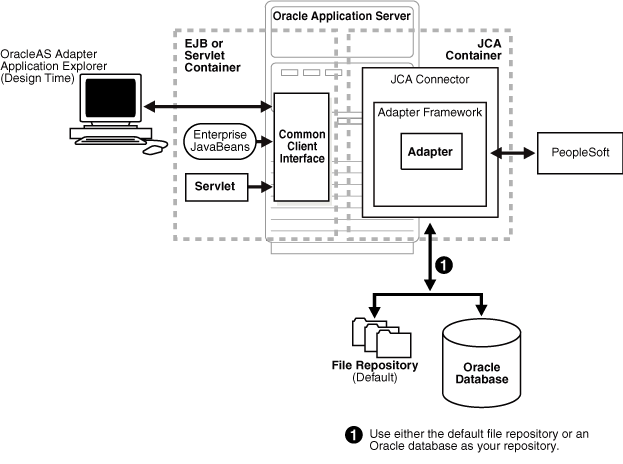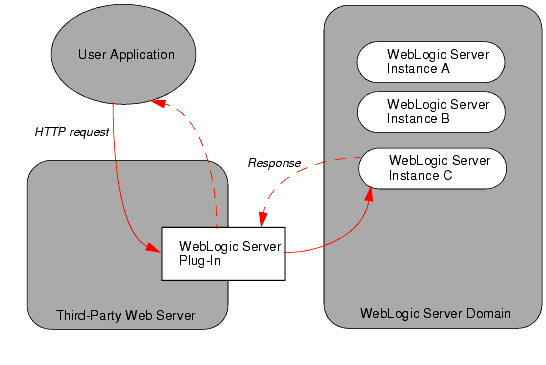Weblogic application server tutorial is discussed clearly below as per my knowledge permits. Here I discussed only the basics of weblogic application server tutorial but if you want more information, you can view my blog.
Introduction:
WebLogic is a J2EE application server and also an HTTP web server by Oracle, for UNIX, Linux, Microsoft Windows, and other platforms. WebLogic supports Oracle, DB2, Microsoft SQL Server, and other JDBC-compliant databases.
In September 1995, Paul Ambrose and Carl Resnikoff co-founded WebLogic, Inc. which was then, took over by BEA Systems in 1998 and was named BEA Weblogic. Oracle acquired BEA in 2008 and named BEA weblogic to Oracle Weblogic. Today, Weblogic Application server is one of the most popular application servers in the market. Oracle weblogic is a server software application that runs on a middle tier and commonly used with UNIX, Linux and Windows Operating System. That is, between the database and browser-based thin clients.

You can still acquire more knowledge regarding the weblogic course by attending my online training sessions.
Reasons to choose online training sessions:
- Online learning enables student-centered teaching approach.
- Participating at online training is much less intimidating than in the “classroom”.
- An increased bonding and camaraderie over traditional class environment.
- Understand that the World of Learning has changed.
- Work in partnership with customer to deliver flexibility, Value and service.
- Online environment makes instructors more approachable.
Weblogic application server tutorial:
The weblogic application server tutorial is a Web browser-based, graphical user interface that you use to manage a WebLogic Server domain. A WebLogic Server domain is a logically related group of WebLogic Server resources that you manage as a unit. A domain includes one or more WebLogic Servers and may also include WebLogic Server clusters. Clusters are groups of WebLogic Servers instances that work together to provide scalability and high-availability for applications. You deploy and manage your applications as part of a domain. One instance of WebLogic Server in each domain is configured as an Administration Server. The Administration Server provides a central point for managing a WebLogic Server domain. All other WebLogic Server instances in a domain are called Managed Servers. In a domain with only a single WebLogic Server instance, that server functions both as Administration Server and Managed Server. The Administration Server hosts the Administration Console, which is a Web application accessible from any supported Web browser with network access to the Administration Server. Managed Servers host applications.
Use the Administration Console to:
- Configure, start, and stop WebLogic Server instances
- Configure WebLogic Server clusters
- Configure WebLogic Server services, such as database connectivity (JDBC) and messaging (JMS)
- Configure security parameters, including managing users, groups, and roles
- Configure and deploy your applications
- Monitor server and application performance
- View server and domain log files
- View application deployment descriptors
- Edit selected run-time application deployment descriptor elements
Web Application Modules
A Web application on WebLogic Server includes the following files:
- At least one servlet or JSP, along with any helper classes.
- A web.xml deployment descriptor, a J2EE standard XML document that describes the contents of a WAR file.
- Optionally, a weblogic.xml deployment descriptor, an XML document containing WebLogic Server-specific elements for Web applications.
- A Web application can also include HTML and XML pages with supporting files such as images and multimedia files.
UNDERSTANDING TCP/IP AND HTTP
HTTP is a protocol that regulates the Way web browsers and servers communicate. The TCP/IP (Transmission Control Protocol/Internet Protocol) suite of protocols is the primary open standard for network communication. HTTP (HyperText Transfer Protocol), part of this suite, is the protocol of the World Wide Web. All the information that resides on the Web as documents or pages is transferred from server to client with the help of HTTP. It is a stateless protocol, meaning that it doesn’t maintain active session state information about each client connected to the server.
Rather, it is based on request and response architecture: the client contacts the server only when it needs information, and the server communicates with the client only when it needs to deliver information back to the client. Other protocols in the TCP/IP suite include UDP (User Datagram Protocol), ICMP (Internet Control Message Protocol), FTP (File Transfer Protocol), ARP (Address Resolution Protocol), RARP (Reverse Address Resolution Protocol), SMTP (Simple Mail Transfer Protocol), and NNTP (Network News Transfer Protocol).

WEBLOGIC WEB SERVER
Web server software runs HTTP services and is able to host one or more Web sites. Each site is a collection of various documents and applications that form the Web content. This content needs to be delivered to Web clients over the network using HTTP. Various HTTP servers are available on the market today, and most are similar in terms of what they provide because HTTP service is a standard feature of the Web. The WebLogic Web server is a Java-powered server capable of delivering not only static content, but also dynamic content with the help of Java-enabled technologies such as JSP and Java servlets.
WebLogic Web server hosts and delivers static HTML/HTM files, images, Java applets, XML (Extensible Markup Language) documents, JSP, Java servlets, multimedia files, and other types of files. The client running the browser software sends a user request to the server using HTTP. The server software (in our case, the WebLogic Server) examines and interprets the request, prepares to locate the appropriate information, locates the information, and then sends an HTTP response to the client. This response is either an HTML document or an image file, which is then interpreted by the client’s browser software and presented on the client’s interface accordingly.

Let’s break it down even further. The Web server serves requested contents to the client—contents that are either statically available as HTML or dynamically generated using JSP and servlets. When a client sends a request for information to the Web server, the server maps the URL (Uniform Resource Locator) to a file with the given name on the local file system. Then either it reads the content from the disk and serves it out to the network with the aid of HTTP, or the server-side program generates it dynamically.
The Web server software will serve index.html after locating and loading the file from disk to client. The information contained in the document is placed between HTML tags that, along with the requested information, are carried over the network using HTTP. The client software interprets these tags and presents the information in a fashion appropriate for the user. Static Web documents are always placed in the respective folder in the appropriate directory. For example, all the static Web documents for the default Web app are placed in the default Web application folder.
Ports
WebLogic Server typically listens on port 80, but it can be set to listen on port 7001 instead. You can assign the listener port address to any value ranging between 1024 and 65536 (0–1023 are reserved). Figure 1-3 demonstrates the various communication ports available. If you already have a running server installed at port 80, WebLogic Server can be installed to listen on a port other than 80. It is not possible for WebLogic Server to listen to your client’s requests on the same port as another server. For example, if you are using Windows NT/2000, Microsoft IIS will already be installed and running on port 80. In this case, you will either have to stop (shut down) IIS to free up port 80 for WebLogic Server or you must configure the server to listen on another port.
My principles:
Excellence: I am dedicated to achieve the highest standards in Online Teaching, Research and Student services.
Flexibility: Our flexibility learning model adapts to your needs. Our online career training program gives students the flexibility to study on the schedule that fits their lives. You can enroll in most programs and register for most courses at any time of the year and walk at your own space, studying at home, at work or wherever you find yourself.
Innovation: our innovative idea is to make you learn something from everything and everything from something. We also continue to adapt and develop new, learners-centered learning models and technology-based alternative to traditional. We apply technology to make learning Accessible.
Programming models:
- Web Applications provide the basic Java EE mechanism for deployment of dynamic Web pages based on the Java EE standards of servlets and Java ServerPages (JSP). Web applications are also used to serve static Web content such as HTML pages and image files.
- Web Services provide a shared set of functions that are available to other systems on a network and can be used as a component of distributed Web-based applications.
- XML capabilities include data exchange, and a means to store content independent of its presentation, and more.
- Java Messaging Service (JMS) enables applications to communicate with one another through the exchange of messages. A message is a request, report, and/or event that contains information needed to coordinate communication between different applications.
- Java Database Connectivity (JDBC) provides pooled access to DBMS resources.
- Resource Adapters provide connectivity to legacy and other external enterprise systems.
- Enterprise JavaBeans (EJB) provide Java objects to encapsulate data and business logic.
- Remote Method Invocation (RMI) is the Java standard for distributed object computing, allowing applications to invoke methods on remote objects locally.
- Security APIs allow you to integrate authentication and authorization into your Java EE applications. You can also use the Security Provider APIs to create your own custom security providers.
- WebLogic Tuxedo Connectivity (WTC) provides interoperability between WebLogic Server applications and Tuxedo services. WTC allows WebLogic Server clients to invoke Tuxedo services and Tuxedo clients to invoke EJBs in response to a service request.
- Overview of WebLogic Server Application Development describes developer tools and best practices for coding WebLogic Server applications.
- for additional programming topics, see the Developing Applications on Oracle WebLogic Server topic page.
Conclusion:
I have the expertise in delivering knowledge and course training to individuals seeking to launch, change or accelerate their careers. Mostly focus to meet the specific needs of adults’ learners by delivering highly flexible, accessible and affordable learning opportunities. Unique campus-open space-provides you with access in learning resources, Expert trainers and assessors, collaboration with other learners and a comprehensive range of support services.
As traditional training institutes require you to attend training sessions at a specified time, they can’t offer flexibility of schedule that you need. But online training has made way for a new practice that allows you to learn at your available time and convenient place. Online training program is suitable for Employees, Professionals and students who are busy in occupations, hectic schedules and jam-packed work. Online training can be the best choice to learn software courses.
Online training allows you to set your own schedule and decide where you wish to be trained, whether in the convenience of the home, the office, on a vacation, or anywhere else. Strategy of providing you training is with ultimate control-to study anywhere, anytime and at your own space. weblogic application server tutorial is to give you the basic idea about the importance of weblogic course at present moving world. Hope these basics of weblogic application server tutorial are helpful.
Comments
Post a Comment